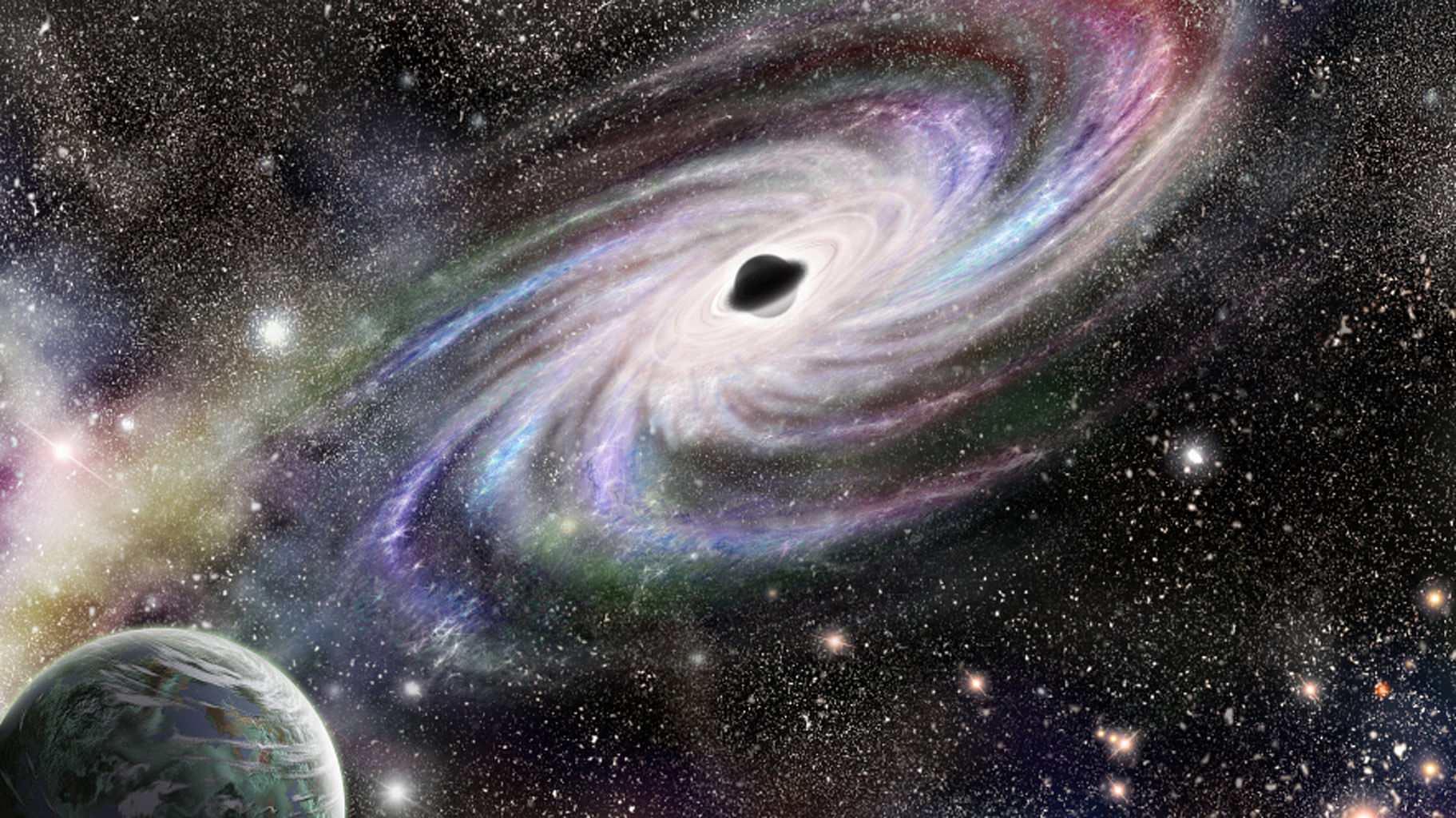
If you launch telescopes into Earth orbit, you could make a telescope as large as the distance between telescopes on the ground and the one in space, increasing the sharpness of the images you can create. So, that begs the question, can you build a telescope that’s even bigger than the Earth? Doeleman says yes. The data is then combined and played back to create an image of a black hole. Each of these radio telescopes records data from the black hole at their geographic locations, effectively forming a planet-sized telescope array. The Event Horizon Telescope links synchronized radio dishes around the globe. “The idea behind the Event Horizon Telescope was to turn the Earth into a telescope.” - Doeleman And that’s exactly what Doeleman and his team did. So, in order to image one, you need to build a really big telescope. And if you were to see it, it would be the equivalent of seeing an orange on the Moon.” -Doeleman “In the center of our own galaxy, the black hole… is four million times the mass of our Sun. This, along with their distance from Earth, can make black holes even harder to spot (even if you could see them). I like to call the center of the galaxy the crowded, urban area compared to the suburbs where we live… What makes the center of the galaxy so exciting to study is things impact each other because it’s so crowded and so extreme.” -Ghez Black holes are both massive and infinitesimally small at the same timeĮinstein’s theory of gravity predicts that the singularities at the center of black holes are the smallest objects in the universe, and their extreme gravity pulls all nearby mass into a surprisingly compact cosmic package. “Where I do my work at the center of the galaxy the environment is so different than elsewhere in the galaxy. We now think there are black holes at the center of most galaxies. By observing the stars near the center of the Milky Way, Ghez was able to study the gravitational field distorting their orbits, revealing a supermassive black hole. Scientists can “see” black holes by observing their gravitational influence on the things around them. We can only see it indirectly… by its diaphanous presence.” - Doeleman It is where gravity is so intense that even light can’t escape from that object, so we have to observe it through its effect on other things - on matter, on light. So how can you imagine, let alone study, the unseeable? They represent regions of space where the pull of gravity is so intense nothing can escape it, not even light. Here are some of our favorite mind-blowing black hole facts: We can’t see black holes, so we must observe them indirectlyīlack holes by their very definition are invisible. Visual of the black hole at the center of M87, imaged by the Event Horizon Telescope. Our conversations with Doeleman and Ghez convinced us that black holes are even more mind-bogglingly cool than we could have ever imagined. And Doeleman is the Founding Director of the Event Horizon Telescope and heads the team that imaged the black hole at the center of galaxy M87.

Ghez shared the 2020 Nobel Prize in Physics for her work in proving the existence of the black hole at the center of our galaxy, Sagittarius A*. To learn more, we spoke with two experts: Dr. But in the last few years, our knowledge of black holes has expanded exponentially - from the confirmation of supermassive black holes at the center of galaxies to the first ever image of a black hole captured by the Event Horizon Telescope. The concept of black holes isn't new - scientists first theorized their existence in the early 20th century.

We've wanted to break down black holes on the AirSpace podcast for a while now - if only so that we could better understand them ourselves (they’re among the most mysterious phenomena in the universe, can you blame us?).


 0 kommentar(er)
0 kommentar(er)
